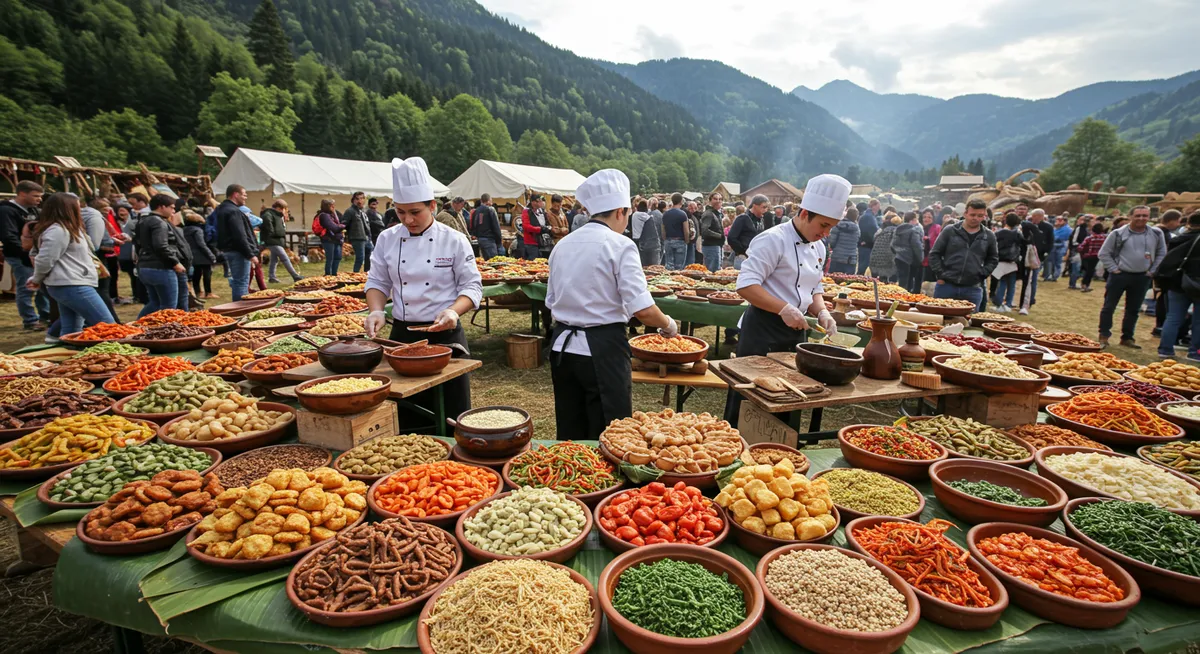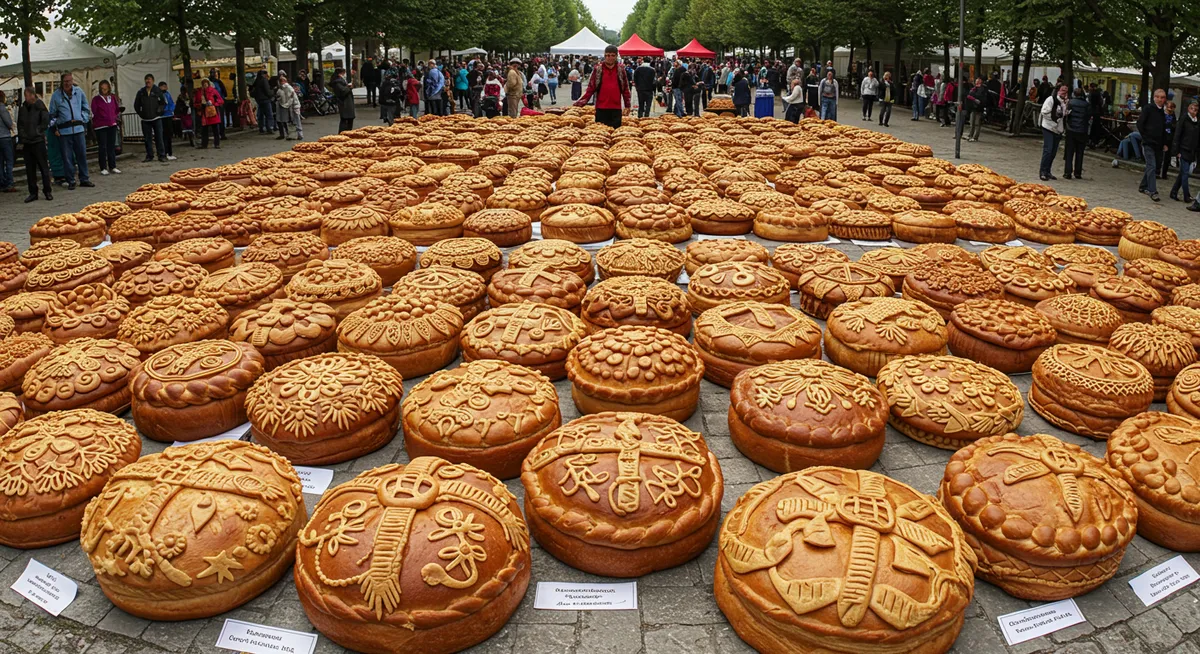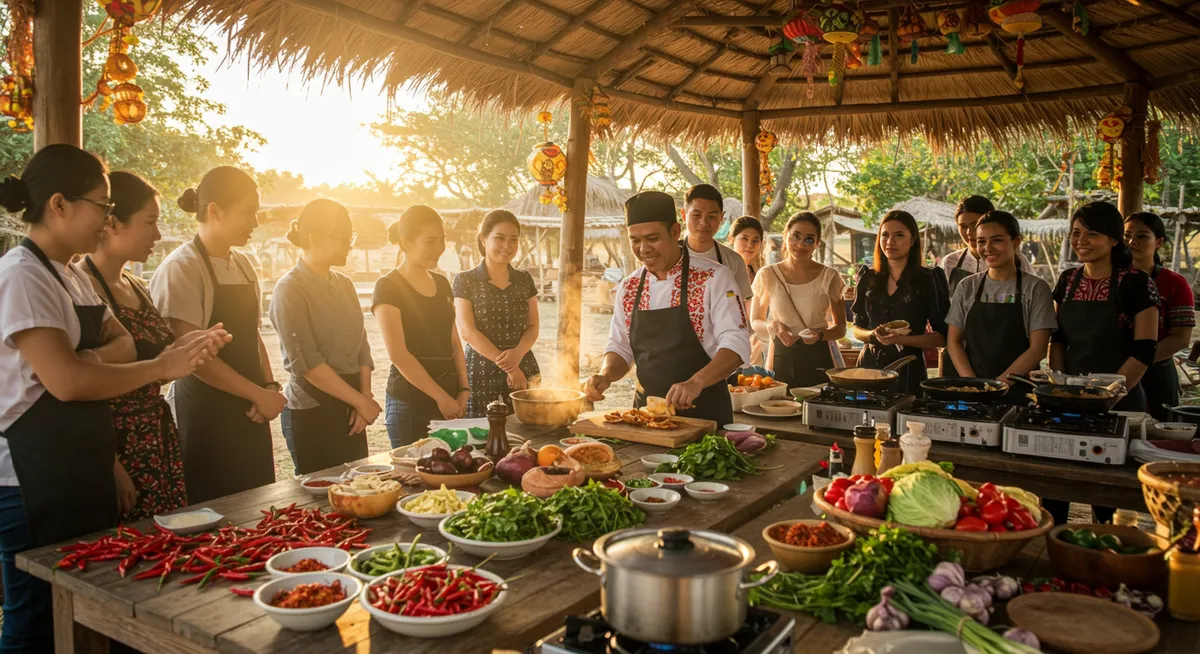Traditional Festival Foods Guide | Authentic Culinary Experiences Worldwide

Traditional Festival Foods: Culinary Gateways to Cultural Heritage
Few aspects of cultural celebrations create more immediate and memorable connections than food. Festival cuisine represents centuries of cultural identity, agricultural patterns, migration histories, and spiritual beliefs, all expressed through recipes and cooking techniques passed down through generations. This guide explores the extraordinary diversity of festival foods across global cultures and examines how travelers can engage meaningfully with these culinary traditions through participatory experiences, guided tastings, cooking workshops, and community meals.

The Cultural Significance of Festival Foods
Festival foods transcend mere sustenance to become powerful cultural symbols that communicate heritage and values:
- Symbolic Ingredients: Specific foods represent prosperity, longevity, fertility, or spiritual beliefs in festival contexts
- Seasonal Connections: Many festival foods showcase seasonal ingredients that mark important points in the agricultural calendar
- Community Bonds: Preparation and consumption of festival foods strengthen social connections through shared labor and celebration
- Historical Memory: Traditional recipes preserve cultural memory, connecting modern celebrations to ancestral practices
- Identity Markers: Distinctive regional festival foods express local identity and pride in cultural heritage
Festival Food Categories Across Cultures
Traditional festival foods can be understood through several major categories that appear across diverse cultures:
Ritual and Ceremonial Foods
These foods hold specific symbolic meaning and are prepared according to traditional methods that may include special tools, timing, or spiritual practices:
- Sacred Bread Traditions: From Mexican Day of the Dead bread to Eastern European Easter breads, ceremonial loaves often feature elaborate decorations carrying religious or seasonal symbolism
- Offering Foods: Dishes prepared specifically for ancestral altars, deity worship, or spiritual ceremonies often follow precise traditional recipes
- Blessing Foods: Items that undergo ceremonial blessing before consumption, from Diwali sweets to St. Joseph's Day pastries

Harvest and Seasonal Celebration Foods
These foods showcase seasonal abundance and agricultural cycles, appearing during festivals that mark key moments in the growing calendar:
- First Harvest Celebrations: Dishes featuring the earliest crops of the season, often prepared with special reverence
- Preservation Traditions: Many festivals coincide with traditional food preservation activities, from autumn kimchi-making in Korea to olive harvesting in Mediterranean regions
- Winter Storage Foods: Hearty preserved dishes that showcase techniques for extending food availability through colder months
Feast and Abundance Foods
These elaborate, often labor-intensive dishes symbolize prosperity and celebration, typically prepared in large quantities for community sharing:
- Whole Animal Roasts: From whole pig roasts at Filipino fiestas to lamb barbecues at Greek Easter celebrations
- Multi-Day Preparation Dishes: Complex recipes requiring days of preparation, like Mexican moles or Indian wedding biryani
- Communal Cooking Traditions: Dishes prepared by multiple community members working together, often in public spaces
Sweet Celebration Treats
Confections and desserts hold special significance in festival traditions worldwide:
- Festival Cookies and Pastries: From Italian Christmas panettone to Mexican wedding cookies, sweets often mark special occasions
- Symbolic Confections: Treats shaped to represent festival themes, like skull-shaped sugar candies for Day of the Dead
- Sugar Art Traditions: Elaborate decorative techniques using sugar, from Chinese sugar paintings to European gingerbread houses
Regional Festival Food Traditions
Festival foods reflect regional ingredients, cooking methods, and cultural influences, creating distinctive culinary landscapes:
East Asian Festival Foods
Lunar New Year, harvest festivals, and ancestral celebrations feature symbolic foods representing luck and prosperity:
- Chinese New Year Dumplings: Shaped like ancient gold ingots to symbolize wealth in the coming year
- Japanese Osechi Ryori: New Year's boxes with preserve-style foods, each carrying specific meanings for the year ahead
- Korean Chuseok Rice Cakes: Songpyeon rice cakes shaped into half-moons and steamed over pine needles for autumn harvest festival
- Vietnamese Tet Sticky Rice Cakes: Square and round bánh chưng and bánh dày represent earth and sky in New Year celebrations
South Asian Festival Foods
Religious celebrations, weddings, and harvest festivals showcase regional spice traditions and symbolic sweets:
- Diwali Mithai: Elaborate sweet preparations using ghee, milk, sugar, and nuts represent celebration and prosperity
- Pongal Harvest Dishes: Sweet and savory rice preparations mark the Tamil harvest festival
- Eid Seviyaan: Vermicelli desserts prepared with milk, nuts, and dates to celebrate the end of Ramadan
- Holi Festive Treats: Colorful sweets and thandai spiced milk mark the spring festival of colors
Mediterranean and Middle Eastern Festival Foods
Ancient agrarian traditions and religious influences create rich festival food practices:
- Greek Easter Traditions: Red-dyed eggs, tsoureki bread, and whole lamb roasts mark Orthodox Easter celebrations
- Italian Regional Festival Pastries: Each town's patron saint celebration features distinctive local pastry traditions
- Moroccan Eid al-Adha Dishes: Elaborate preparations featuring sacrificial lamb honor Ibrahim's devotion
- Lebanese Seasonal Meze: Festive spreads featuring dozens of small dishes showcase seasonal ingredients and preservation methods

Latin American Festival Foods
Indigenous ingredients blend with European and African influences in vibrant celebration cuisines:
- Day of the Dead Offerings: Pan de muerto, mole, and sugar skulls honor ancestors during November celebrations
- Christmas Tamales: Family tamale-making gatherings prepare masa-based bundles wrapped in corn husks or banana leaves
- Carnival Festa Foods: Brazilian acarajé and other street foods sustain celebrants during Carnival festivities
- Quinceañera Celebration Cakes: Elaborate multi-tiered cakes mark the transition to womanhood
African Diaspora Festival Foods
Traditions preserved through migration and cultural resilience connect communities across continents:
- Harvest Festival Yams: West African traditions featuring yam preparations honor agricultural abundance
- Caribbean Carnival Foods: Street foods like Trinidadian doubles and Jamaican jerk sustain revelers during festivities
- Kwanzaa Celebration Meals: Dishes from across the African diaspora honor cultural heritage and principles
- Juneteenth Traditional Foods: Red foods symbolizing resilience and sacrifice feature prominently in freedom celebrations
Northern European Festival Foods
Seasonal abundance and preservation traditions shape festival cuisines in colder climates:
- Scandinavian Midsummer Feasts: First harvests of potatoes, herring, and berries mark summer solstice celebrations
- Eastern European Christmas Eve Traditions: Twelve meatless dishes represent apostles in Polish Wigilia and similar traditions
- May Day Specialties: Spring foods featuring foraged herbs and new dairy mark the return of growing season
- German Oktoberfest Cuisine: Hearty meat preparations, pretzels, and seasonal vegetables accompany beer celebrations
Immersive Festival Food Experiences
Travelers seeking deeper connections with culinary traditions can participate in experiences that offer hands-on engagement:
Cooking Workshops and Classes
Learning traditional preparation methods creates meaningful cultural understanding:
- Festival-Specific Cooking Schools: Many regions offer specialized classes during festival periods when traditional foods take center stage
- Artisan Technique Workshops: Learn specific skills like pastry decoration, fermentation methods, or traditional butchery
- Ingredient Foraging Experiences: Gather wild or seasonal ingredients with knowledgeable guides before preparation
- Multi-Generational Family Classes: Learn from family matriarchs and patriarchs who hold ancestral recipes
Market Tours and Ingredient Explorations
Understanding ingredients and food systems creates context for festival traditions:
- Festival Market Specialties: Many celebrations feature special markets with seasonal and ritual ingredients
- Specialty Producer Visits: Meet artisans who create festival-specific items like special breads or confections
- Seasonal Harvest Excursions: Participate in olive harvests, grape picking, or other seasonal activities that provide festival ingredients
- Urban Food Heritage Tours: Explore neighborhoods where immigrant communities maintain festival food traditions
Community Meals and Celebrations
Sharing festival foods in authentic contexts provides the most immersive cultural experience:
- Community Feast Participation: Join public celebrations where traditional foods are shared with visitors
- Home Hospitality Programs: Experience festival meals with local families through homestay or meal-sharing programs
- Food Festival Volunteering: Assist with preparation at community food festivals to learn techniques firsthand
- Religious Celebration Meals: Where appropriate and welcomed, experience ceremonial foods in their spiritual context during local rituals and sacred ceremonies

Planning Your Culinary Festival Experience
Creating meaningful connections with festival food traditions requires thoughtful preparation:
Research and Timing
Understanding the calendar of food traditions helps plan immersive experiences:
- Festival Preparation Periods: Often the most interesting time to learn about food traditions, when communities prepare special items
- Seasonal Availability: Research when specific ingredients are available in their prime form
- Workshop Scheduling: Many cooking experiences require advance booking, particularly during peak festival periods
- Market Days: Special markets often operate on specific days before or during festivals
Dietary Considerations and Adaptations
Navigating dietary restrictions while respecting traditions requires balance:
- Communicating Needs: Learn how to explain dietary restrictions in the local language
- Research Alternatives: Some cooking schools offer modified versions of traditional recipes
- Observational Participation: When unable to consume certain items, focus on learning preparation methods
- Finding Compatible Traditions: Research festival foods that naturally align with your dietary needs
Documentation and Preservation
Capturing culinary knowledge respectfully ensures you can continue traditions at home:
- Recipe Collection Methods: Ask permission to document recipes through notes, recordings, or photos
- Ingredient Sourcing Knowledge: Learn about potential substitutions for difficult-to-find items
- Technique Documentation: Focus on capturing hand movements and methods that aren't easily conveyed in written recipes
- Cultural Context Notes: Record the stories, occasions, and meanings associated with specific dishes, including any connections to traditional dances or ceremonial attire that might accompany the meals
Ethical Considerations in Food Tourism
Approaching festival food experiences respectfully ensures positive cultural exchange:
- Fair Value Exchange: Pay appropriately for knowledge sharing and recognize the value of culinary expertise
- Photography Etiquette: Ask permission before photographing food preparation, particularly in sacred or ceremonial contexts
- Acknowledge Sources: When sharing recipes or techniques, credit their cultural origins and specific teachers
- Support Sustainability: Choose experiences that promote sustainable food systems and preserve traditional knowledge
- Respect Sacred Foods: Understand that some ceremonial foods may not be appropriate for tourists to consume or prepare
The Transformative Power of Festival Food Experiences
Beyond the immediate pleasure of tasting, festival food experiences offer profound opportunities for cultural connection:
- Sensory Cultural Memory: Food experiences create powerful sensory memories that evoke cultural understanding
- Skill Development: Learning traditional techniques builds appreciation for cultural knowledge
- Relationship Building: Cooking and eating together creates bonds that transcend language barriers
- Cultural Perspective: Understanding food traditions provides insight into values, history, and community priorities
- Ongoing Practice: Many travelers continue preparing festival foods at home, maintaining cultural connections
Traditional festival foods offer one of the most accessible and meaningful ways to engage with living cultural heritage. By participating in cooking traditions, market exploration, and communal meals, travelers can move beyond surface-level tourism to develop genuine appreciation for the complex cultural expressions embodied in celebration cuisines around the world.
Ready to explore festival food traditions?
Discover opportunities to engage with culinary heritage through workshops, markets, and celebration meals around the world.
Check back soon for our upcoming spotlights on iconic festival foods, including Diwali sweets, Lunar New Year traditions, and Mediterranean holiday feasts.
Explore More Cultural Experiences
Discover other ways to deeply engage with traditional cultural practices around the world:
Sacred Ceremonies & Local Rituals
Learn how to respectfully participate in spiritual traditions that connect communities to their ancestral heritage.
Traditional Dress & Costume
Explore the rich textile traditions and cultural significance of ceremonial garments across diverse cultures.
Heritage Sites & Traditional Dances
Experience how traditional performances bring historical places to life through movement and music.
All Cultural Immersion Experiences
Return to our main guide on transformative cultural experiences that go beyond festival attendance.